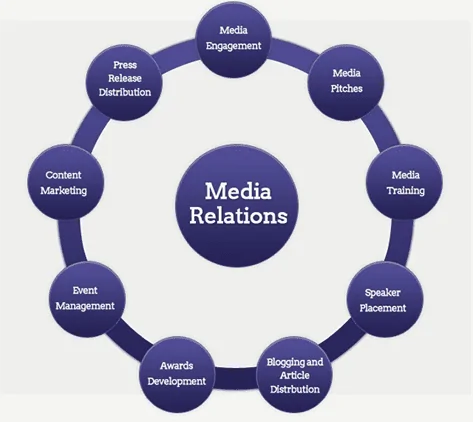Describe the Growth of Public Relations In India.
Growth of Public Relations In India.
As a modern concept, the Public Relations in India developed with industrial development and introduction of modern management technique. The public relations is now an essential aid in building mutual understanding and trust between an organization and its various public’s. For the Government, which is beset with a multitude of, problems, Public relations has also become equally useful. The government has set up public relations units under various ministries and departments.
Public Relations (PR) and the National Movement: After the First World War, the professional PR in India did not see much success. There was no forum for public to express themselves except for a few nationalist newspapers, which were often subject of harassment by the government. Many of the newspapers were also forced to shut down with allegation of anti-government campaign.
However, during the Second World War the government took a number of measures to reach out to the public. The government’s objective was to mobilize support in favor of the war effort. The Indian National Congress and the people were generally against the war effort. The government thus;put efforts to achieve its purpose.
The government created a Ministry of Information and Broadcasting. The Directorate of Information, which was formed earlier, was merged with the new ministry. The Ministry used PR techniques to create opinion in favor of the war effort. A National War Front was also set up and a number of units were created under the Ministry including the War Purposes Exhibition Unit, the Films Division and the Central Bureau of Public Opinion. These efforts to mobilize the public opinion in favor of the war effort gave a fillip to organized public relations activities in the country.
The PR techniques also played a crucial role in the national movement. Mahatma Gandhi was able to communicate with the people and won public support despite the problems of cultural and linguistic diversity and the serious obstacles put by the alien government. Many of the techniques he adopted to communicate with the people are now part of the standard practice of PR all over the world.
First, getting the people identify themselves with a cause and with the leader espousing that cause: Gandhi discarded his Western dress and dressed himself in the briefest of garments such as the poorest of the poor use in,the country. He realized that it was only by doing so the people would be able to identify themselves with him and the cause he represented.
Second, using the right symbol: Gandhi understood the value of symbols. He used the ‘charkha’ (spinning wheel) symbol, which became the logo of the national movement, symbolizing self-reliance and people’s participation in the cause of the movement.
Third the staging of events: Gandhi staged events like the Dandi March to make salt. It was a challenge to the British rulers and captured the imagination of the whole nation. The bonfires of foreign cloth was another such device, Gandhi used.
However, Gandhi did not neglect the conventional means of communication. He held meetings, gave speeches, published a journal, “Harijan”, and continued to write articles focusing on problems of interest to the people. He made use of all possible media and devised imaginative forms of communication to overcome restrictions put by the government on the official media. The PR practitioners have much to learn from this unique example of Gandhi’s art of effective communications.
Development of PR in the Post-Independence Period:
The scenario in India changed completely immediately after the country’s Independence. The country saw the partition and there were widespread disturbances. The leaders of the national movement who had realized only too well the importance of communication in winning the support of the people, set about the task of laying the foundations of the Indian state.
The country has to frame a democratic Constitution. The task was performed by the Constituent Assembly. This body, which was set up in 1946, completed its task in November 1949. The Constitution came into force on 26 January, 1950. India became a parliamentary democracy, federal in structure but with unitary features.
For PR practitioners, the Constitution had two significant provisions. First, the guarantee of certain fundamental rights, including the right to freedom of speech and expression, freedom of assembly, association or union, of movement, residence and the right to practice any profession or occupation. The second was the adult suffrage. All citizens who are not less than 18 years of age (originally it was 21 years. In 1989, the franchise was extended), have the right to be registered as voters in any election to the Lok Sabha and legislative assemblies of the States.
With the establishment of elected legislatures along with the establishment of a free press, the two essential prequisites for the growth of PR had been fulfilled. The stage became ripe for the development of the professional Public Relations in India. Post-independence, the planned industrialization and expansion of the diversification of the media contributed to a conducive environment for the spread of PR in the country.





